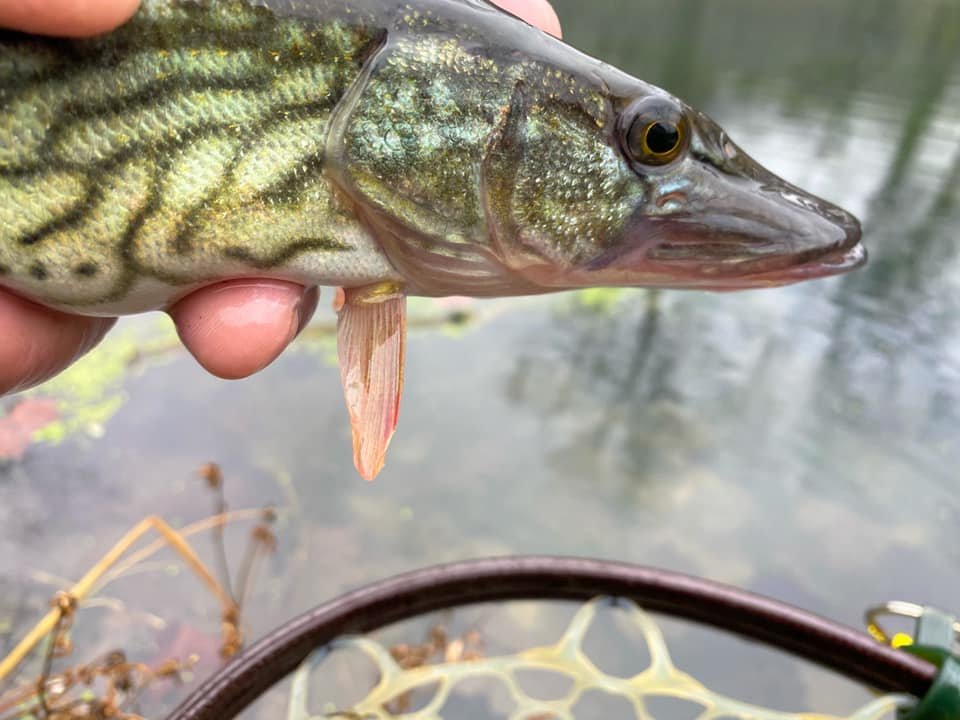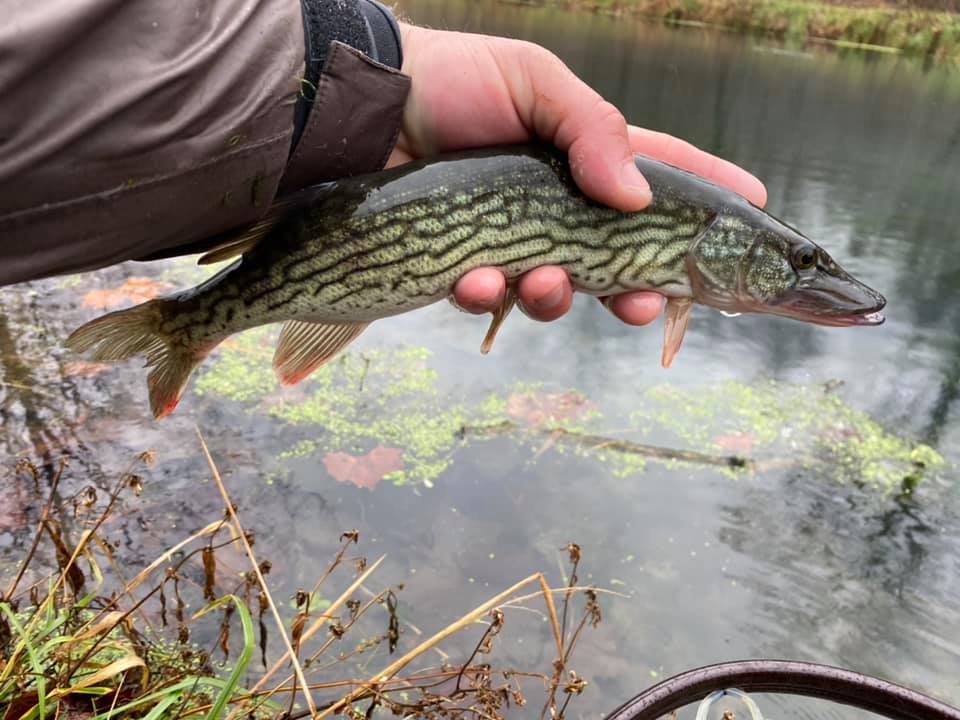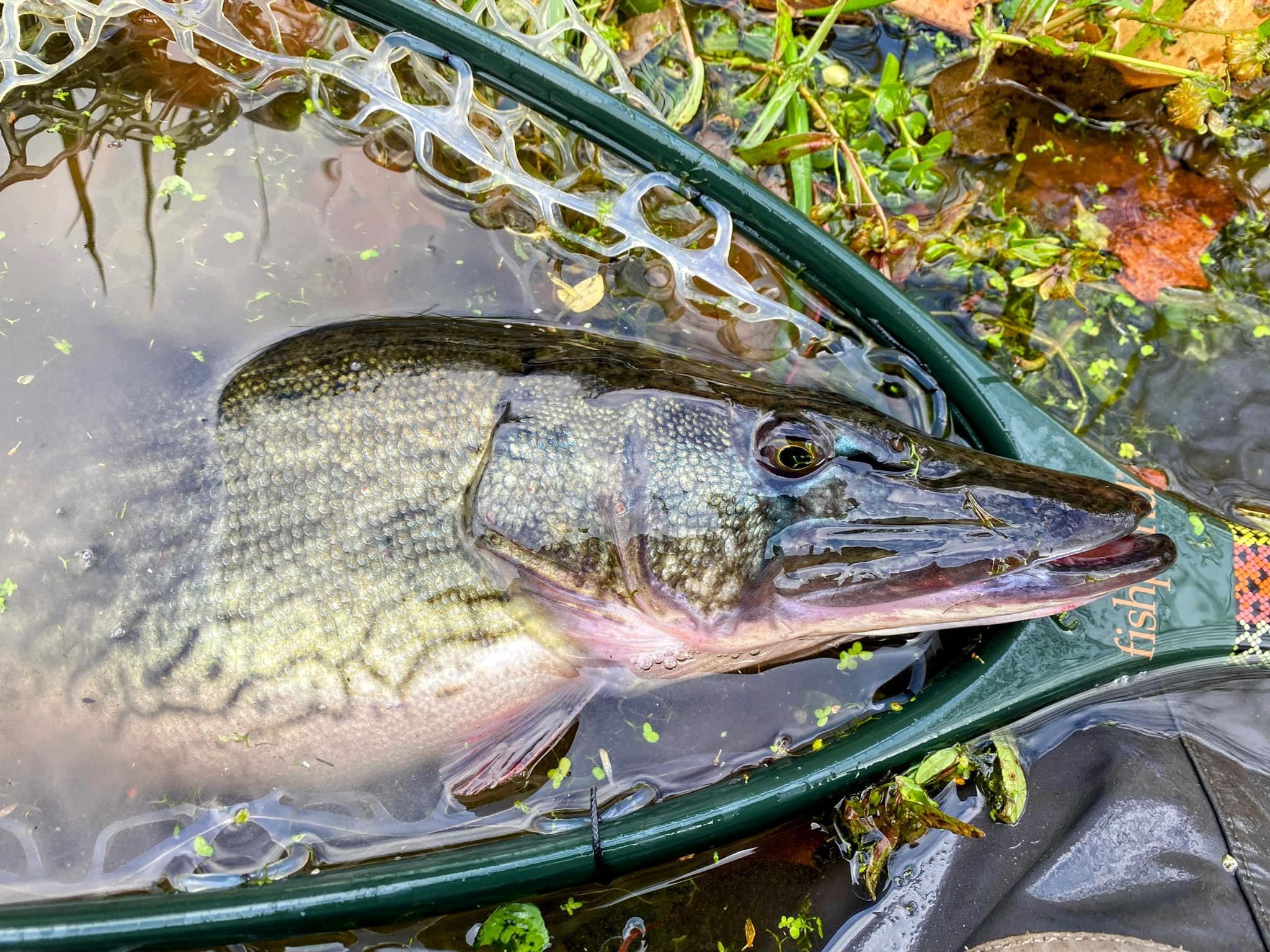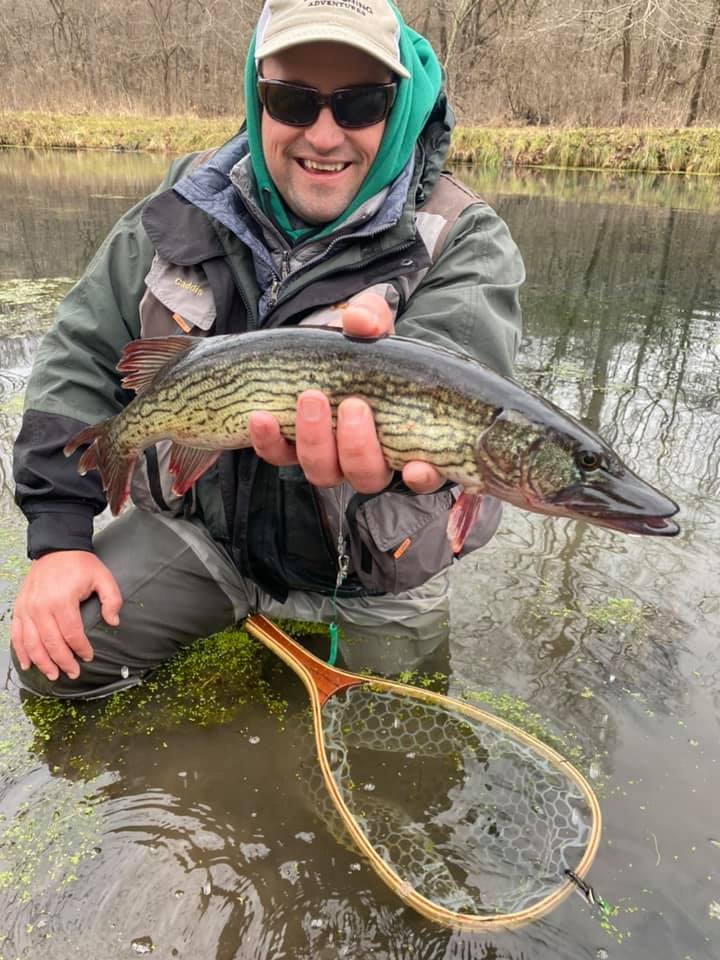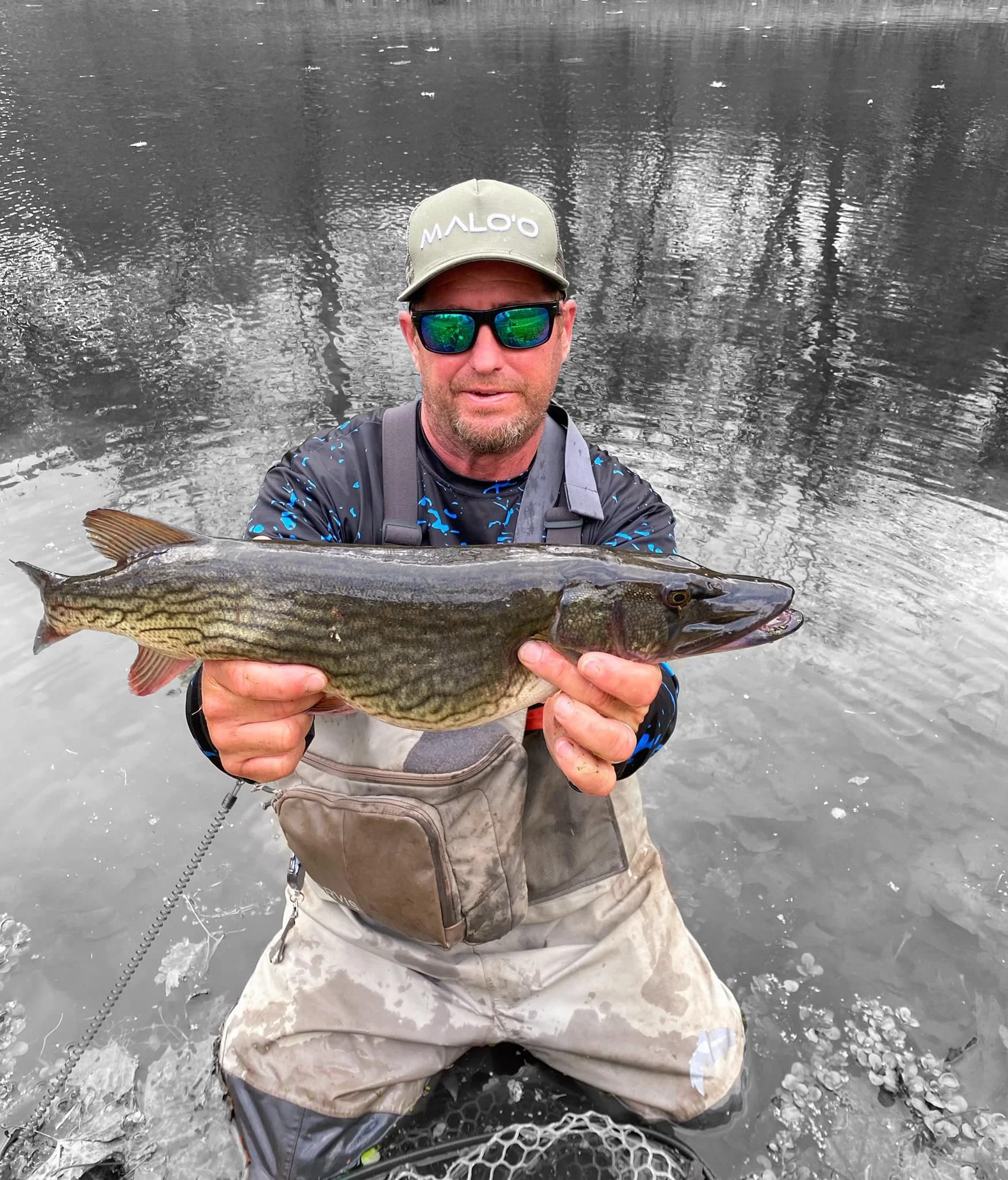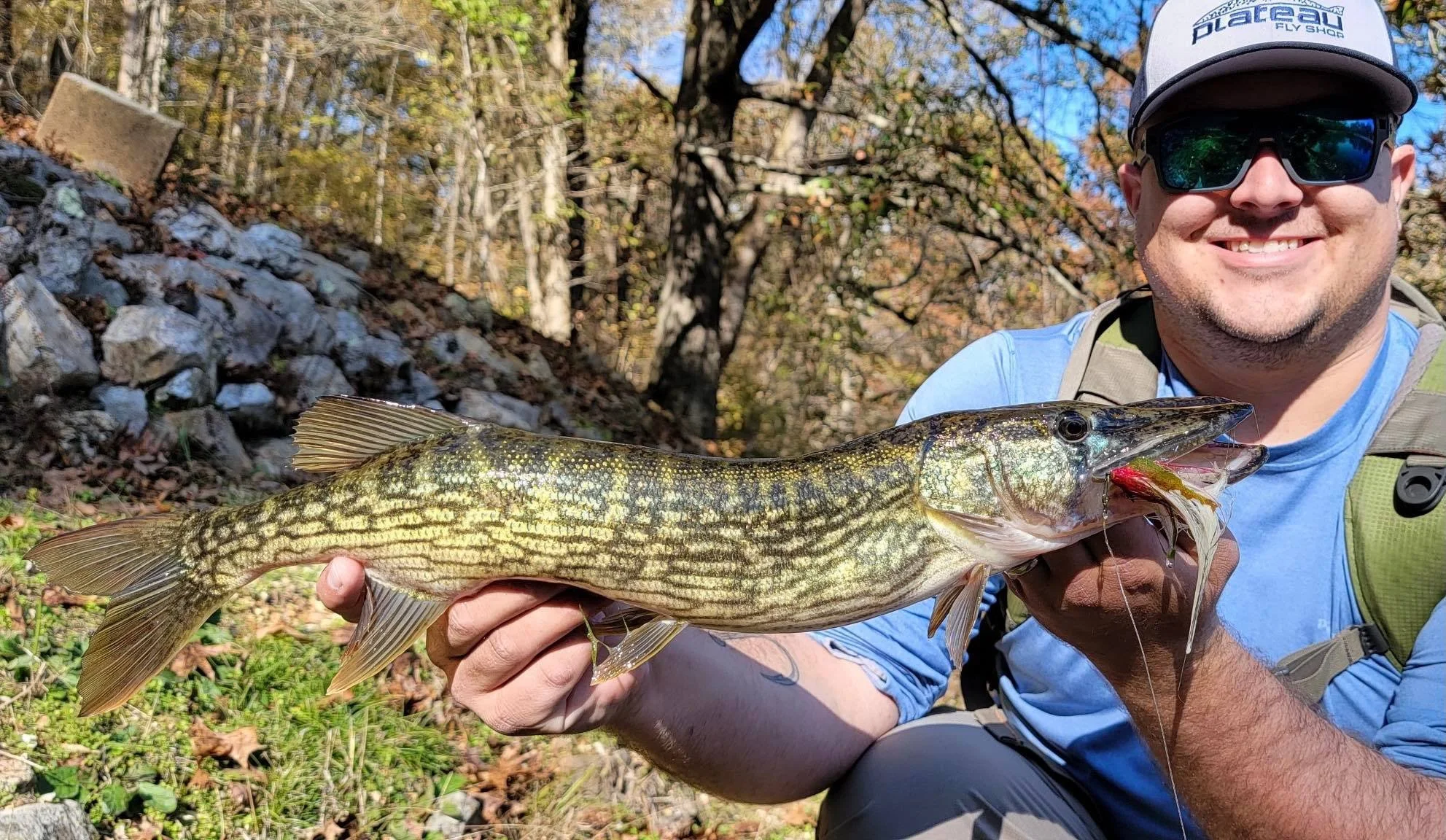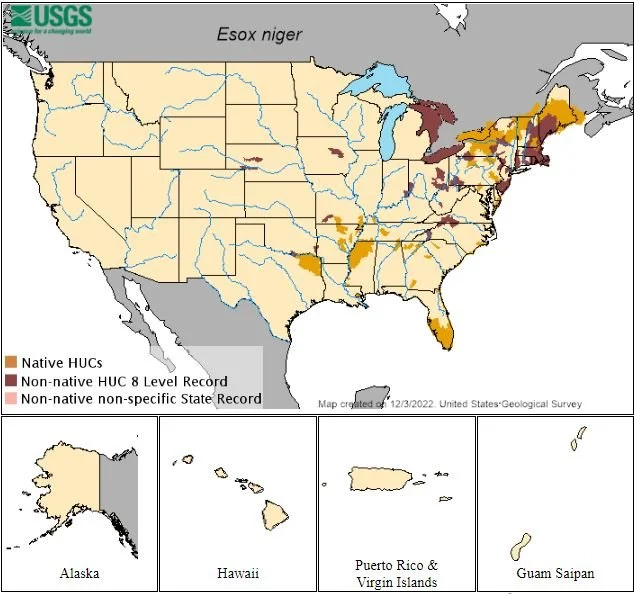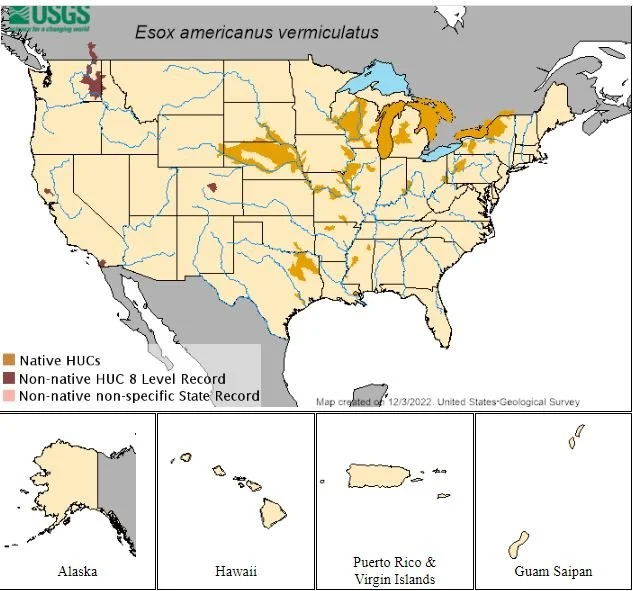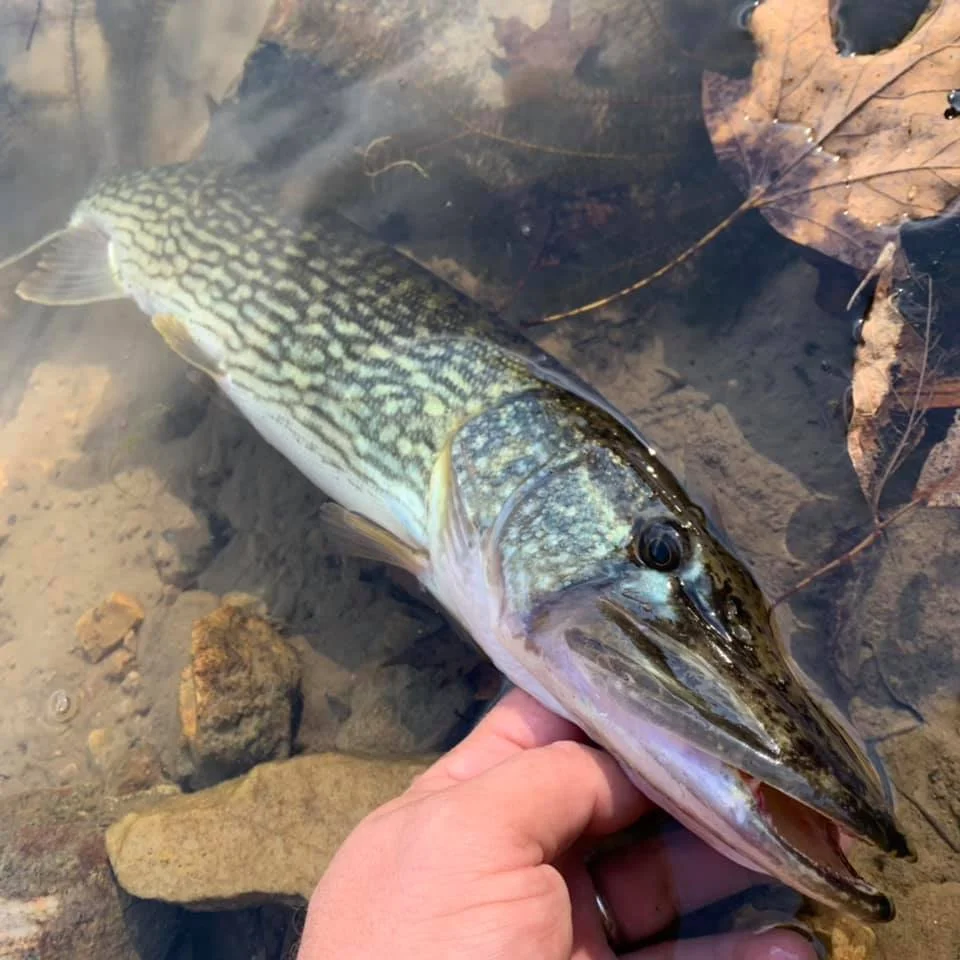Targeting the Elusive Chain and Grass Pickerel
Some fishing pursuits are glaringly obvious in their appeal. The Musky for example is renowned as the fish of a thousand casts. They grow to alligator-like proportions, will strike on top ferociously, and fight with a demonic energy. Most anglers have already have pegged a Musky near the top of their bucket list of must-catch species. Primal as it is, size absolutely matters in the world of angling. This all begs the question, why write a piece on the Chain or Grass Pickerel instead of the Musky or a Northern Pike?
While significantly junior to the Musky or Northern Pike, Chain and Grass Pickerel are members of the same Esox family of fish that includes them and others, yet they only average about 10-12 inches, in Missouri at least.
You have and will continue to see those big pike and musky stories everywhere else in the world of fishing. For those who enjoy the margins, the outliers, and the fringe elements of fly fishing, there’s always room for new adventures and that’s why this blog exists.
For this piece I sought input from two anglers who have had success catching both grass and chain pickerel. They are our type of anglers, absolutely chasing a variety of species on the fly regularly.
J&J Fly Fishing includes Jeremy and Jacob Patterson. These brothers are together many weekends either guiding clients or pursuing great fly fishing opportunities for themselves. Jeremy has caught at least 78 species of fish on the fly. We spent some time with Jeremy to get his insights on the Chain and Grass Pickerel he regularly targets and catches here in Missouri.
Davis Horton has been tying flies for 11 years, fishing for 10. He’s part of pro staff for Douglas Fly Fishing and is a state record holder for a spotted bass caught in July 2021. Noteworthy especially because it was Iowa’s only fly-caught state record and was actually released. Davis ties semi-commercially while also serving as a full-time environmental educator for IACCB. His patterns have landed pike, smallmouth bass, walleye, channel catfish, largemouth bass, and a variety of panfish, as well as blackfin tuna, greater amberjack, alligator gar, tarpon, striped bass, and more. He serves as the current Conservation Chair for the Hawkeye Fly Fishing Association
Davis Horton with a sweet Chain Pickerel catch.
Locating Pickerel
The hard to catch nature of these almost folklore pickerel has more to do with locating them to begin with. One reason the Chain Pickerel or Grass Pickerel can be described as an elusive species to catch when fly fishing has more to do with it’s geographical distribution. Especially the native contingent of Chain Pickerel as one example per the USGS map below. They are limited to the south and southeastern corner of the state of Missouri, parts of Arkansas, Texas, Mississippi, Florida, sparse sections of south and eastern states plus some Northeastern states.
Meanwhile Grass pickerel are disbursed throughout Nebraska, Missouri, Texas, Wisconsin, Michigan, New York, Pennsylvania. Arkansas, Mississippi, Ohio, South Dakota, and Oklahoma in mostly sparse sections of each state. It’s a recurring theme throughout both species that their distribution is not statewide nor widely available.
When it comes to locating Pickerel, according to Jeremy, the Chain and Grass Pickerel like different habitats entirely. “Chain Pickerel like the cold clean water of the select waters I frequent, in or similar to trout parks but it’s not where the trout guys are. It’s in the nastiest, froggiest water you can find there is where you’ll find the Chain Pickerel. I fish parts of the Current River for these fish usually. “
Meanwhile “Grass pickerel like the swampier haunts like drainage ditches next to farm fields that stay flooded. They can be found in areas of southeast Missouri near Poplar Bluff for example. Casting tight to the bank, up along the grass lined shorelines with a size 12 and 14 Woolly Bugger or other small streamers is usually effective. 12 inches is a solid size Grass Pickerel usually.”
According to Jeremy their winter spawning season is prime time to get out there with smaller males at 15-20” but he instead goes looking for the bigger females. Jeremy has been chasing a state record female that has been within his grasp a couple of times over the past few years. He knows exactly who she his because of a unique marking on her face and a tell-tale missing eye on one side.
Per Davis: “Southeast Missouri, particularly the region within the Salem Plateau, offers incredible opportunities to target chain pickerel on the fly. While they are apex predators, their feeding habits can be fickle. Too much sunshine, harsh cold fronts, or a sudden onset of wind can be enough to shut down feeding. Fishing overcast days with pre frontal conditions tend to offer the best opportunities for fly anglers.”
Catching Pickerel
While 20 to 30 fish day are not uncommon, it takes time to develop proficiency. Jeremy shared a story of bringing a friend with him trying to catch chain pickerel. His buddy walked past as many as 10 Pickerel that Jeremy was able to spot. Having spent years doing this, he knew where they would be.
Jeremy is a Coast Guard licensed guide who captains boat trips on Smithville Lake catching crappie and other species on the fly from a boat. He also hosts trout fly fishing trips in northeast Iowa that are purely wading trips only with 2 people per guide.
When it comes to Pickerel, chucking big streamers may work but that has not been Jeremy’s experience. “They are very wary fish and you may get 5-10 casts before they’re gone. They’ll retreat for maybe 30 minutes into the weeds before you might get another shot at that fish.”
Once you get them figured out however, Chain Pickerel are not quite a mystery. “20 to 30 fish days are common, in the last 2 years 15 is a slow day for us. They can be aggressive, but careful sight fishing is usually required. You have to ID them and pursue them carefully, more like stalking to be effective. They sit there and you have to draw the strike out of them. In 8ft of water, the grass is up to about 4ft so they bury at top of the grass. A back and forth slow twitch retrieve will draw them out, usually with a 4 to 6lb test leader with float line floating line. They suck up the fly slowly, very faint like a crappie bite so the initial hit is easily missed. My approach is not the heavy streamers or wire leaders you’d expect. It’s subtle.
For Davis, he has had less subtle experiences. His first 20” pickerel came on a cold November morning with high winds and overcast skies. While walking a small backwater marsh, “I hooked a small chain pickerel that I had sight fished with a mini double deceiver of my own creation. As I was landing the fish, a monstrous fish smacked the fish I had hooked. The impact was so ferocious that it knocked the fly out of the fish’s mouth. As I watched the fly fall out, I stripped the fly quickly back towards me to grab the attention of the larger individual. Three strips in and the larger fished PULVERIZED the fly. After a short fight through heavy vegetation, I got the fish landed without much difficulty.”
A Chain Pickerel from Davis Horton
Gear for Pickerel
Jeremy uses a 10WT TFO TFR setup because chain pickerel “will alligator roll into the grass pretty ferociously. I’ve broken rods and other gear chasing these fish.“
Malo’o in CA provides gear like his hoodies and Stone Creek from Colorado provides their rods and tippet supplies and Riversmith is their go to brand for fly rod roof racks.
For Davis, his preferred gear includes the following:
“A 7 wt Scott Meridian outfitted with a Tibor Everglades was my weapon of choice on that day. It continues to be a favorite of mine for pike, smallmouth bass, pickerel, and more. I prefer to fish a Scientific Anglers Sonar Titan Taper Full Intermediate fly line to get bulkier flies down in the water column quickly. It works especially well with a short leader system and articulated streamers.
A red and white mini double deceiver is my favorite for smaller esox species. Additionally, chartreuse and white clouser minnows, small blockhead poppers, and baby fat minnows in a variety of colors work extremely well for chain pickerel. I also like to keep my leader system simple. A 5 foot piece of 16 pound fluorocarbon with a small piece of 20 lb wire tippet (8”-12”) is perfect for chains. If conditions are tough and the fish are wary, ditch the wire.”
While the approaches and experiences may vary, it’s agreed that finding and catching the elusive Pickerel is a special accomplishment for most any fly angler. If variety entices you too, the Chain and Grass Pickerel are both worthy target species to pursue.



